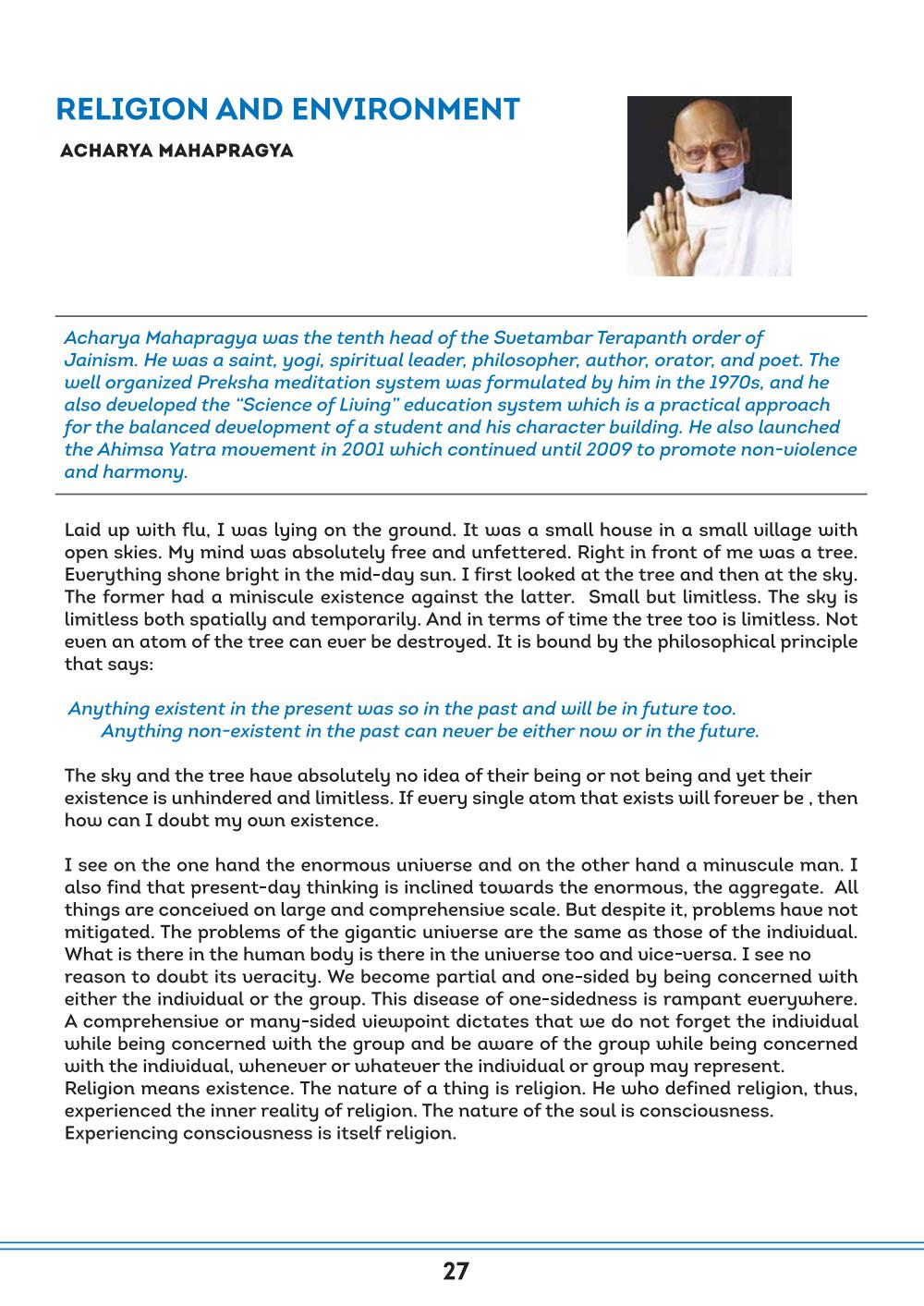________________
RELIGION AND ENVIRONMENT ACHARYA MAHAPRAGYA
Acharya Mahapragya was the tenth head of the Suetambar Terapanth order of Jainism. He was a saint, yogi, spiritual leader, philosopher, author, orator, and poet. The well organized Preksha meditation system was formulated by him in the 1970s, and he also developed the "Science of Living" education system which is a practical approach for the balanced development of a student and his character building. He also launched the Ahimsa Yatra movement in 2001 which continued until 2009 to promote non-violence and harmony.
Laid up with flu, I was lying on the ground. It was a small house in a small village with open skies. My mind was absolutely free and unfettered. Right in front of me was a tree. Everything shone bright in the mid-day sun. I first looked at the tree and then at the sky. The former had a miniscule existence against the latter. Small but limitless. The sky is limitless both spatially and temporarily. And in terms of time the tree too is limitless. Not even an atom of the tree can ever be destroyed. It is bound by the philosophical principle that says:
Anything existent in the present was so in the past and will be in future too.
Anything non-existent in the past can never be either now or in the future.
The sky and the tree have absolutely no idea of their being or not being and yet their existence is unhindered and limitless. If every single atom that exists will forever be, then how can I doubt my own existence.
I see on the one hand the enormous universe and on the other hand a minuscule man. I also find that present-day thinking is inclined towards the enormous, the aggregate. All things are conceived on large and comprehensive scale. But despite it, problems have not mitigated. The problems of the gigantic universe are the same as those of the individual. What is there in the human body is there in the universe too and vice-versa. I see no reason to doubt its veracity. We become partial and one-sided by being concerned with either the individual or the group. This disease of one-sidedness is rampant everywhere. A comprehensive or many-sided viewpoint dictates that we do not forget the individual while being concerned with the group and be aware of the group while being concerned with the individual, whenever or whatever the individual or group may represent. Religion means existence. The nature of a thing is religion. He who defined religion, thus, experienced the inner reality of religion. The nature of the soul is consciousness. Experiencing consciousness is itself religion.
27




